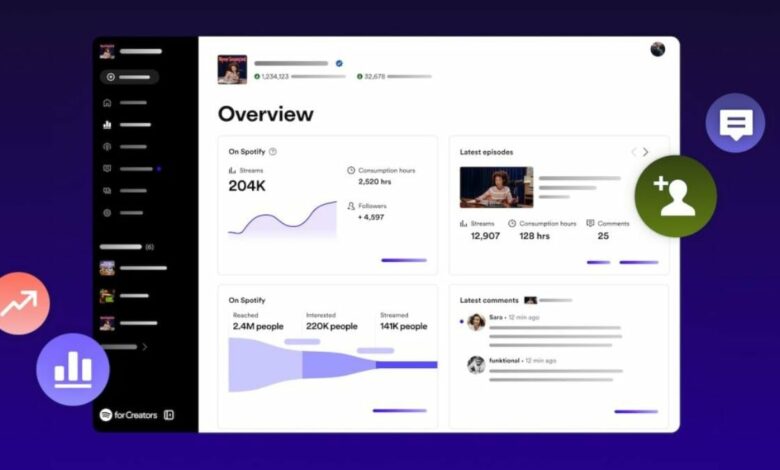Spotify for podcasters becomes Spotify for creators with new features

Spotify for Podcasters – the all-in-one podcasting platform – introduced one of its biggest updates ever during the Now Playing event on Wednesday. It brings with it a new affiliate program that allows users to monetize video podcasts, introduces more tools to grow the audience, and offers improved analytics. Furthermore, the app has been renamed and updated and is now called Spotify for Creators. This development comes after the company carried out a fan survey that found the number of users consuming video podcasts grew by 88 percent in the past year.
Spotify for creators
In a blog afterSpotify announced that its Spotify for Podcasters app has evolved into Spotify for Creators, in line with its mission to provide more tools to both audio and video creators. This platform allows creators to upload their content in audio, video, or both formats, interact with their audience, and access enhanced analytics.
It has introduced a new affiliate program in Australia, Canada, the UK and the US that allows creators to earn a revenue share from ads played on or off Spotify. Meanwhile, they will also earn revenue based on the duration of their video content streamed by Premium subscribers and actual engagement.
To drive audiences across social media platforms, new custom video thumbnails and podcast clips features are being added. Once rolled out, creators will be able to upload short-form content directly to Spotify. These clips are displayed within the app, allowing viewers to migrate their audience from short-form content to full-length episodes. There’s also a new tracking feed that makes it easier for viewers to find their favorite content. Additionally, Spotify Premium users can stream video podcasts without ads.
Enhanced analytics with greater access to data have also been introduced on Spotify, with options to get a combined overview of hours consumed, growth in followers and total streams, in addition to the same stats for individual episodes. The rollout of these features is aimed at improving audience engagement and retention, along with monetization revenue.



